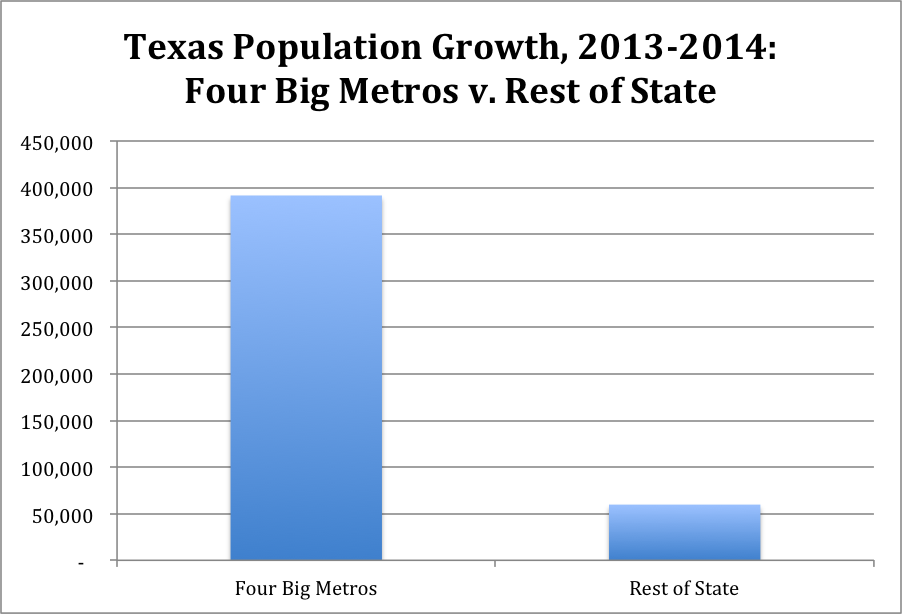The big news from the U.S. Census Bureau this morning was that Houston added more population last year than any other metropolitan area in the country. Between 2013 and 2014, metro Houston added 156,000 people. That means one of every 15 people added to the U.S. population last year was added in Houston.
But the headline about Houston masked a bigger and maybe more interesting pattern: Last year, almost 40% of all U.S. population growth occurred in large metropolitan areas in the three largest Sun Belt states – Texas, Florida, and California.
And this pattern was especially strong in Texas, where 87% of all population growth occurred in the four large metro areas – Houston, Dallas, Austin, and San Antonio.
Population growth throughout the nation is increasingly concentrated in the nation’s 60 or so large metropolitan areas – metros with a population of 1 million people or more. About 55% of the nation’s population lives in these metros. But according to the Census Bureau’s figures, almost 75% of the population growth last year occurred in those metros.
But the numbers for the big metro areas in the three largest Sunbelt states really tell an amazing story.
Each state has four large metro areas with a population of 1 million people or more1. And in each case, the majority of the state’s population lives in those four metro areas. California’s population is most concentrated in the large metros – about 80%. In Texas, about 67% of the population lives in the four large metro areas. In Florida, that figure is 63%.
Last year, the nation added approximately 2.3 million people. Almost 900,000 of those people – 37% -- were added in these 12 big metro areas.
But Texas is the big story here. Texas is concentrating population in the big metros at a much faster rate than the other two states. Last year, the state grew by 450,000 people. Of that total, 390,000 – or about 87% -- were added in either Houston, Dallas-Fort Worth, Austin or San Antonio. Only 60,000 people were added to the entire rest of the state combined.
The pattern was somewhat similar in California, where 79% of the additional population was located in the big four metro areas. Florida is the exception, with only 61% of the new population going into the four big metros.
1 The 12 metros are Los Angeles-Anaheim-Riverside, San Diego, San Francisco Bay Area, and Sacramento in California; Houston, Dallas-Fort Worth, San Antonio, and Austin in Texas; and Miami-Fort Lauderdale, Tampa-St. Petersburg, Orlando, and Jacksonville in Florida. The Census Bureau separates Los Angeles and the Bay Area into several Metropolitan Statistical Areas but we have combined them for the purposes of this analysis.

